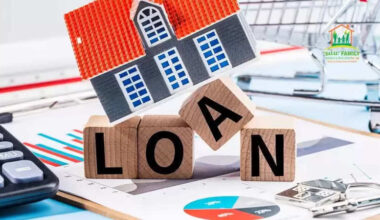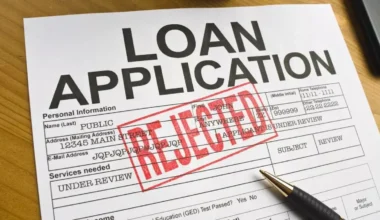Finding affordable funding has always been one of the toughest parts of running a small business. But in 2025, the good news is that government-backed loans are evolving fast—offering more flexibility, new digital processes, and wider eligibility for entrepreneurs.
Whether you’re an aspiring startup founder, a family-owned manufacturer, or a local service provider, understanding which government loan program fits your business could save you thousands—and position you for growth when private lenders hesitate.
Why Government Loans Still Matter in 2025
Let’s be honest—running a small business in today’s economy can feel like an extreme sport. Inflation, fluctuating interest rates, and unpredictable supply chains make survival difficult. And with banks tightening credit requirements, many entrepreneurs are asking:
“Where can I find funding that doesn’t drain my cash flow or drown me in high interest?”
That’s where government loan programs come in. They exist to make capital more accessible, especially when private lenders pull back. Most are backed by the U.S. Small Business Administration (SBA) or state-run initiatives under the State Small Business Credit Initiative (SSBCI).
Government loans stand out for several reasons:
- Lower interest rates than typical commercial loans.
- Longer repayment periods, giving you breathing room.
- Reduced lender risk, because the government guarantees part of the loan.
- Broader eligibility, even for those without perfect credit.
According to SBA.gov, these programs supported over $42 billion in small-business lending in 2024 alone—and are expanding even more in 2025.
What’s New in 2025: Reforms You Should Know
If you’ve ever applied for an SBA loan before, you might think you know the playbook. But 2025 has brought significant reforms that small-business owners should not ignore.
1. Updated SBA SOP (Standard Operating Procedures)
Effective June 1, 2025, the SBA rolled out a new SOP that affects eligibility, underwriting, and ownership rules.
Now, all owners must be U.S. citizens, nationals, or lawful permanent residents (LPRs) to qualify. This change was designed to tighten oversight and reduce fraud in the loan process. (Congress.gov)
If you’re operating a small business with international partners, double-check your ownership structure before applying.
2. Launch of the MARC Program (Manufacturers’ Access to Revolving Credit)
One of the biggest wins for small manufacturers this year is the MARC Program, created by the SBA in partnership with industry groups.
It offers up to $5 million in revolving credit lines or term loans, helping U.S. manufacturers access working capital without the delays typical of long loan processes.
You can learn more directly on SBA.gov’s MARC Loan page or through Manufacturing Dive.
3. Expansion of the State Small Business Credit Initiative (SSBCI)
The U.S. Department of Treasury is expanding the SSBCI program, a $10 billion fund empowering states to provide loan guarantees, collateral support, and venture capital to small businesses.
This program is particularly impactful for minority-owned and women-led enterprises that traditionally face tougher barriers to credit.
Top Government Loan Programs for Small Businesses (2025 Edition)
Below is a side-by-side comparison of the most valuable government-backed loan programs in 2025.
| Program | Ideal For | Loan Size & Terms | Key Benefits | Possible Drawbacks |
|---|---|---|---|---|
| SBA 7(a) Loan | Working capital, debt refinance, business expansion | Up to $5 million, repayment up to 25 years | Flexible use, government-backed guarantee | Requires collateral, lengthy approval time (SBA.gov) |
| SBA 504 (CDC) Loan | Real estate or equipment purchase | Up to $5.5 million | Fixed low interest, long-term stability | Only for fixed assets (SBA 504 details) |
| SBA Microloan | Startups or small cash needs | Up to $50,000, term ≤ 6 years | Easier approval, community-based lenders | Higher interest than large loans (Microloan Program) |
| Community Advantage Loan | Underserved areas and minority-owned firms | Up to $250,000, SBA guarantees 75–85% | Targets low-income communities | Limited lender availability (Community Advantage Program) |
| MARC Loan (New) | Small manufacturers | Up to $5 million, revolving or term structure | Flexible, supports working capital | Only for NAICS 31–33 sectors (Manufacturing Dive) |
| SSBCI Programs | State-level lending partnerships | Varies by state | Tailored programs, state support | Complexity in application (U.S. Treasury SSBCI) |
1. SBA 7(a) Loan — The All-Purpose Lifeline
If small-business lending had a “gold standard,” the SBA 7(a) program would be it.
It’s the most popular option, used for everything from startups to acquisitions.
Highlights:
- Borrow up to $5 million
- Use for working capital, expansion, refinancing, or equipment purchases
- Repayment terms up to 25 years for real estate and 10 years for other uses
- Guaranteed up to 85% by the SBA (Official SBA Page)
Why business owners love it:
- It’s flexible—funds can cover nearly any legitimate business expense.
- Lower interest rates (typically Prime + 2.75%).
- Accepted by most banks and credit unions.
Caution:
The approval process can take several weeks, and you’ll need extensive documentation—including business financials, tax returns, and a strong repayment plan.
Check Investopedia’s SBA Loan Guide for practical prep steps.
2. SBA 504 (CDC) Loan — The Builder’s Choice
If your goal is to buy property or heavy machinery, the SBA 504 Loan (also called the CDC Loan) is a strong contender.
It’s structured as a three-way partnership:
- A private lender funds 50%
- A Certified Development Company (CDC) covers 40%
- You contribute 10% equity
This structure allows for low fixed interest rates and long repayment terms, sometimes up to 25 years.
Ideal uses:
- Purchasing commercial real estate
- Upgrading facilities
- Buying long-term machinery or equipment
Learn more on SBA’s 504 page or through lender resources like CDC Small Business Finance.
Pros: predictable rates, low down payment, job-creation incentives.
Cons: lengthy application, limited to fixed-asset projects (no working capital).
3. SBA Microloan Program — Funding for the Underdog
Sometimes you don’t need millions—you just need $10,000 to $50,000 to take the next step.
That’s where the SBA Microloan Program shines.
Unlike other SBA loans, these are handled by local nonprofit lenders and community organizations, not big banks.
According to SBA.gov, microloans can be used for:
- Inventory and supplies
- Working capital
- Furniture or fixtures
- Equipment purchases
Perks:
✅ Easier to qualify
✅ Access to training and business mentorship
✅ Reasonable repayment terms (up to 6 years)
Drawbacks:
❌ Smaller amounts
❌ Slightly higher interest rates (usually 8–13%)
If you’re a first-time entrepreneur, consider pairing this with a local Small Business Development Center (SBDC) for free guidance. You can find one near you through the SBDC locator.
4. Community Advantage Loan — Empowering Underserved Entrepreneurs
The Community Advantage (CA) program is one of the SBA’s most inclusive options.
It targets low-income communities, veterans, women, and minority-owned businesses.
Here’s what makes it unique:
- Loan amounts up to $250,000
- SBA guarantees 75–85% of the amount
- Delivered through mission-driven lenders like community development financial institutions (CDFIs) and nonprofits
Unlike banks, these lenders often focus on your potential rather than your credit score alone.
Find approved CA lenders via SBA Lender Match.
Why it’s powerful:
It bridges financial inclusion gaps and helps entrepreneurs who might otherwise be overlooked.
Example:
A local bakery expanding into a second location could qualify for $100K through a CA loan—even with limited collateral.
5. MARC Loan — The Game-Changer for Manufacturers
For small manufacturers, 2025 is a breakthrough year thanks to the Manufacturers’ Access to Revolving Credit (MARC) program.
The SBA created MARC to simplify working capital access for small industrial firms in sectors 31–33 (NAICS classification).
Program Overview:
- Loan limit: up to $5 million
- Type: revolving credit line or term loan
- Term length: up to 10 years (extendable to 20)
- Guarantee: 75–85%
- Purpose: inventory, materials, contract financing, or operations
Learn more from Manufacturing Dive and National Association of Government Guaranteed Lenders (NAGGL).
Why it matters:
Manufacturers often suffer cash crunches between orders. MARC allows them to draw, repay, and reuse funds—without reapplying every time.
6. SSBCI-Backed State Programs — Localized Powerhouses
While SBA loans dominate headlines, state-level lending programs can be just as impactful.
The State Small Business Credit Initiative (SSBCI) was originally launched after the 2008 recession and expanded in 2023 under the American Rescue Plan.
Now, in 2025, it’s driving $10 billion in funding to U.S. states and territories.
Each state tailors its approach differently. For example:
- California: Offers loan guarantees up to 80% for small business loans (IBank California)
- Texas: Provides collateral support for startups in energy and agriculture
- New York: Offers matching equity programs through Empire State Development
You can explore available programs on the U.S. Treasury SSBCI page.
Benefits:
- Locally adapted to regional economies
- Often faster processing than federal programs
- Combineable with federal SBA loans
How to Choose the Right Program for Your Business
With so many choices, how do you pick the right one? Use this decision guide:
| Business Need | Best Option |
|---|---|
| Working capital or expansion | SBA 7(a) Loan |
| Buying property or machinery | SBA 504 Loan |
| Starting small or new business | SBA Microloan |
| Serving underserved markets | Community Advantage Loan |
| Manufacturing / industrial sector | MARC Loan |
| Regional flexibility | SSBCI-backed State Program |
Step-by-Step Application Tips
- Clarify your funding goal.
Know exactly what the money is for—equipment, payroll, refinancing, etc. - Check your eligibility early.
Visit SBA’s Eligibility page to avoid rejection surprises. - Gather documents.
Prepare:- Business plan
- Financial statements
- Tax returns
- Collateral list
- Use SBA Lender Match.
The SBA Lender Match Tool connects you with approved lenders within 48 hours. - Don’t ignore local resources.
Partner with your state’s Small Business Development Center (SBDC) for application guidance. - Track your progress.
Many lenders allow you to follow your loan status online—set reminders for document deadlines.
Expert Tips to Maximize Your Approval Chances
Even if you qualify, securing a government loan requires strategic preparation.
Here’s how to boost your odds:
- Keep personal and business credit clean. Pay off small debts and avoid overdrafts.
- Have a repayment plan. Lenders love detailed cash flow projections.
- Be transparent. Don’t hide liabilities or ownership details.
- Show skin in the game. Personal investment signals commitment.
- Seek mentorship. Use free SBA counseling via SCORE.org to refine your application.
Common Mistakes That Derail Applicants
1. Applying for the wrong program — Match the loan purpose to program rules.
2. Ignoring new SBA SOP rules — Check ownership and citizenship criteria.
3. Submitting incomplete documents — Missing tax returns are a deal breaker.
4. Overestimating revenue projections — Stay realistic.
5. Waiting too long — Funding cycles may close early in fiscal years.
Case Study: How a Small Firm Leveraged MARC in 2025
Scenario:
Acme Tools Co., a small metal fabrication shop in Ohio, landed a new contract requiring $400,000 in raw materials. They needed short-term working capital fast.
Solution:
They applied for a MARC revolving line of credit via their local bank, backed by the SBA.
- Loan amount: $400,000
- Guarantee: 75%
- Use: Purchase of materials and project overhead
- Term: 18 months, renewable
Outcome:
By using MARC, Acme Tools avoided taking out a costly private loan, maintained liquidity, and delivered on their contract ahead of schedule.
This illustrates why government loans can fuel real growth when used strategically.
Why You Should Care: The Broader Impact
Beyond helping individual entrepreneurs, government loans stimulate the entire economy.
According to SBA Economic Reports, every $1 million lent through SBA programs supports 10 new jobs on average.
By 2025, these programs are expected to create or sustain over 600,000 jobs nationwide.
That’s more than just funding—it’s empowerment for communities and industries.
Final Thoughts: Use Government Loans as Growth Levers, Not Crutches
The best government loan program for your small business depends on your goals, timing, and readiness.
Here’s the bottom line:
- Start with SBA 7(a) for all-purpose funding.
- Use 504 for expansion or equipment.
- Go micro if you’re new or small.
- Leverage MARC if you’re in manufacturing.
- Tap SSBCI for state-specific support.
Government loans aren’t handouts—they’re launchpads.
Approach them strategically, with preparation and integrity, and they can help you scale beyond what traditional financing allows.







